Garden Map
Leaflet,Guidebook
Tsukuba Botanical Garden Leaflet
 Tsukuba Botanical Garden Leaflet
Tsukuba Botanical Garden Leaflet
Multilingual Guidebook
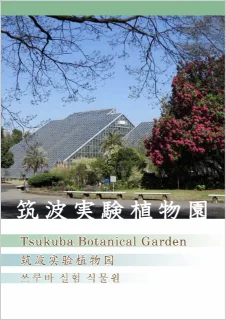 Tsukuba Botanical Garden Multilingual Guidebook(4.1 MB)
Tsukuba Botanical Garden Multilingual Guidebook(4.1 MB)
Garden Map
The garden is divided into the "World Vegetation Area" and the "Human and Biodiversity Area." Visitors can see around 3,000 plant species, including representative plants of Japan, species grown in various environments around the world, and plants useful for daily life.
How to Read the Labels
At Tsukuba Botanical Garden, plant labels are displayed based on a DNA-based classification system.
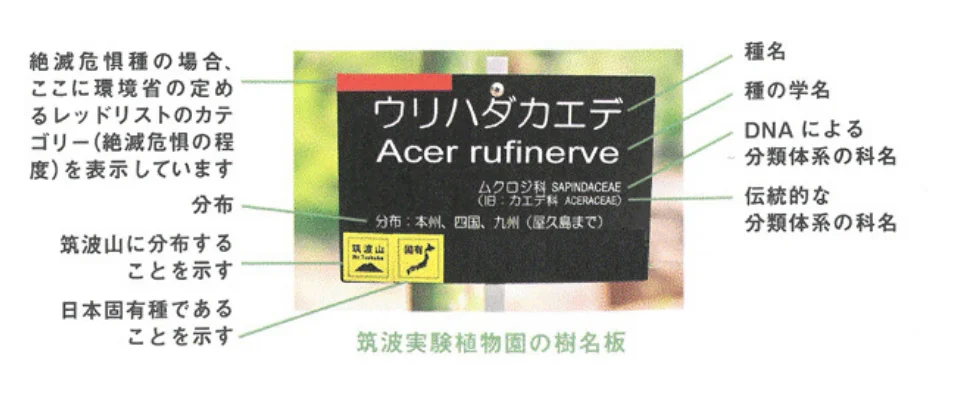
What is the APG Classification System?
n recent years, plant classification has undergone major changes.
Since Darwin demonstrated that living organisms are not creations of God but have evolved from common ancestors into diverse species, biological classification has aimed to reflect evolutionary relationships (phylogeny) as accurately as possible.
To achieve this, botanists around the world have studied the shapes of plant roots, stems, leaves, flowers, and fruits in detail, investigating the evolutionary relationships among various plant species.
However, judging by shape alone, it can be difficult to determine whether similarities reflect close evolutionary relationships, convergent evolution from similar adaptations, or which plant organs most reliably indicate phylogeny.
Since the 1990s, molecular phylogenetic analysis using DNA sequence data has become possible, allowing evolutionary relationships among plant species to be revealed with high reliability.
As a result, it has become clear that many traditional classification systems did not accurately reflect the true paths of evolution.
Among these developments, the Angiosperm Phylogeny Group (APG) compiled and systematized global research on flowering plants, resulting in what is now known as the APG classification.
Similarly, classification systems based on DNA information have been established for ferns and gymnosperms, marking a true period of transformation in plant taxonomy.
This has overturned many long-held assumptions. For example, dicotyledons were traditionally divided into two major groups, Archichlamydeae and Sympetalae, but it has been shown that distinguishing them in this way has no evolutionary significance.
Furthermore, many plant species have been reclassified into different families.
For instance, the Aceraceae family no longer exists, with all its species now placed in the Sapindaceae; Lily-of-the-valley has been moved from the Liliaceae to the Asparagaceae, and so on.
At Tsukuba Botanical Garden, all plant labels have been updated to the DNA-based classification system. At first, you may find the unfamiliar classification confusing, but learning this new system is a way to understand the paths of evolution.
Why not take this opportunity to learn the family names of plants and reflect on the history of their evolution?
Museum Shop
At the Tsukuba Botanical Garden Museum Shop (operated by the National Museum of Nature and Science Promotion Foundation), we offer a variety of plant-related goods, including guidebooks, botanical art postcards, bookmarks, notepads, and books.
Original Tsukuba Botanical Garden merchandise is also available.
Location: Orientation Building
Business Hours: 9:00 AM to 4:30 PM
Closed: Every Monday and the day following a public holiday
Tel: 029-851-5159

Rest Area
Apart from beverage vending machines, no food or drinks are sold within the garden.
Please bring your own lunch or take advantage of the garden’s re-entry policy to purchase food at nearby convenience stores or restaurants.
If you wish to re-enter the garden, please notify the reception desk.
Please note that the rest area may be unavailable during special exhibitions or events.
 Around the Orientation Building (with a vending machine)
Around the Orientation Building (with a vending machine)
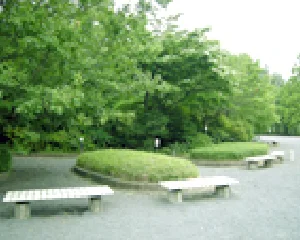 The Central Circle
The Central Circle
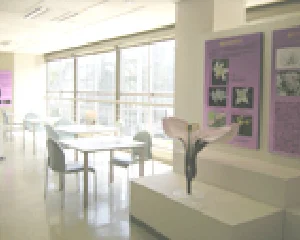 Second floor of the Workshop and Exhibition Building
Second floor of the Workshop and Exhibition Building
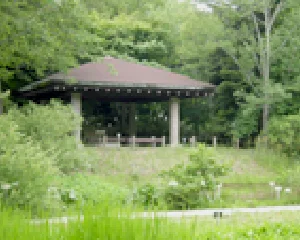 Azumaya (No Eating or Drinking)
Azumaya (No Eating or Drinking)
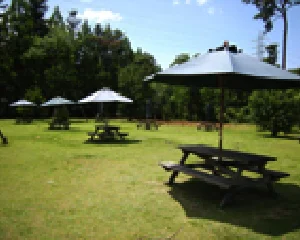 Useful Plant Area, Central
Useful Plant Area, Central
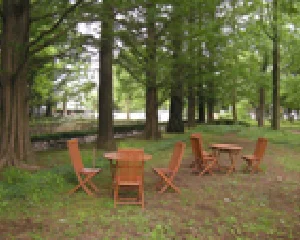 Next to the Promenade
Next to the Promenade